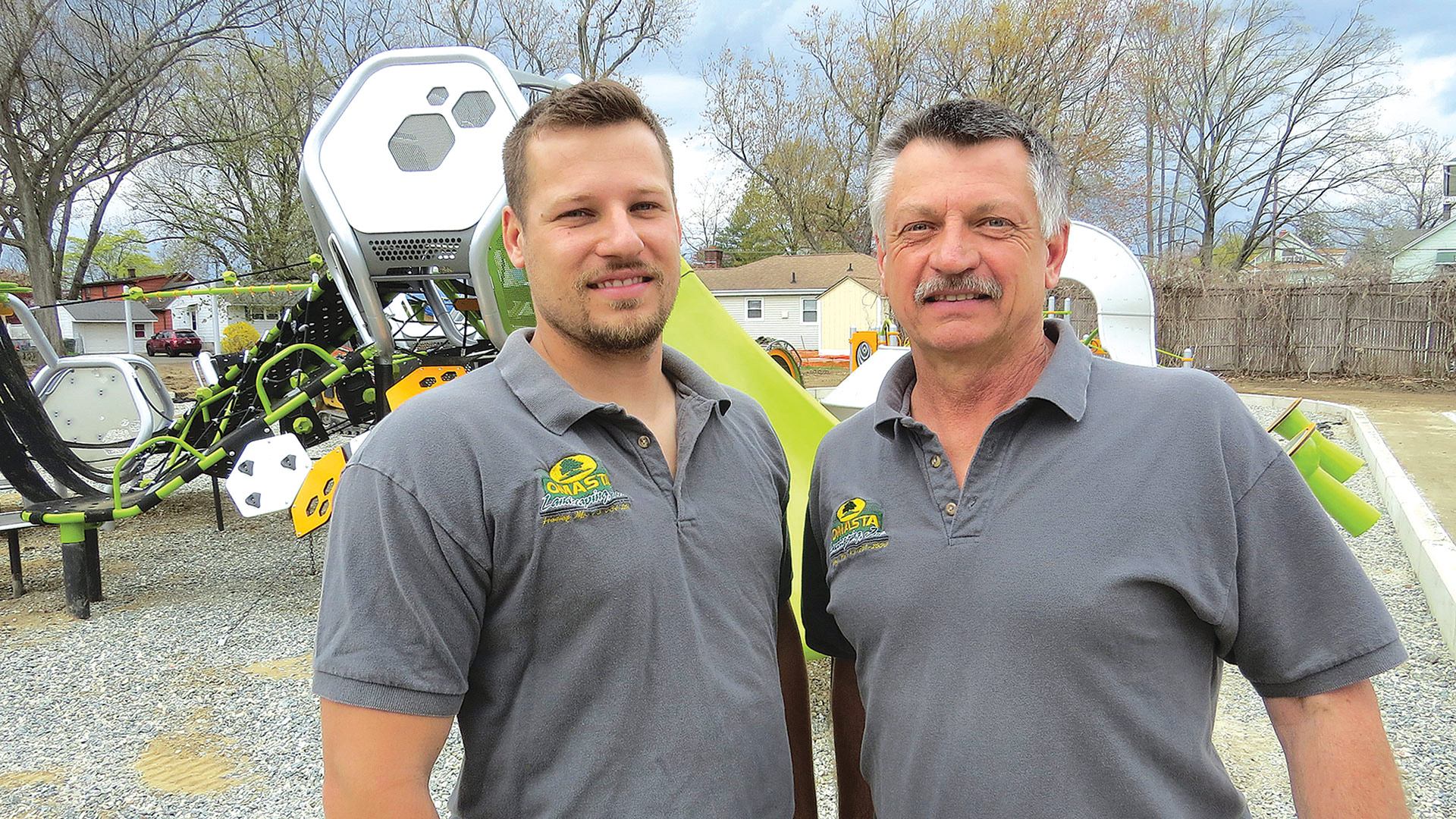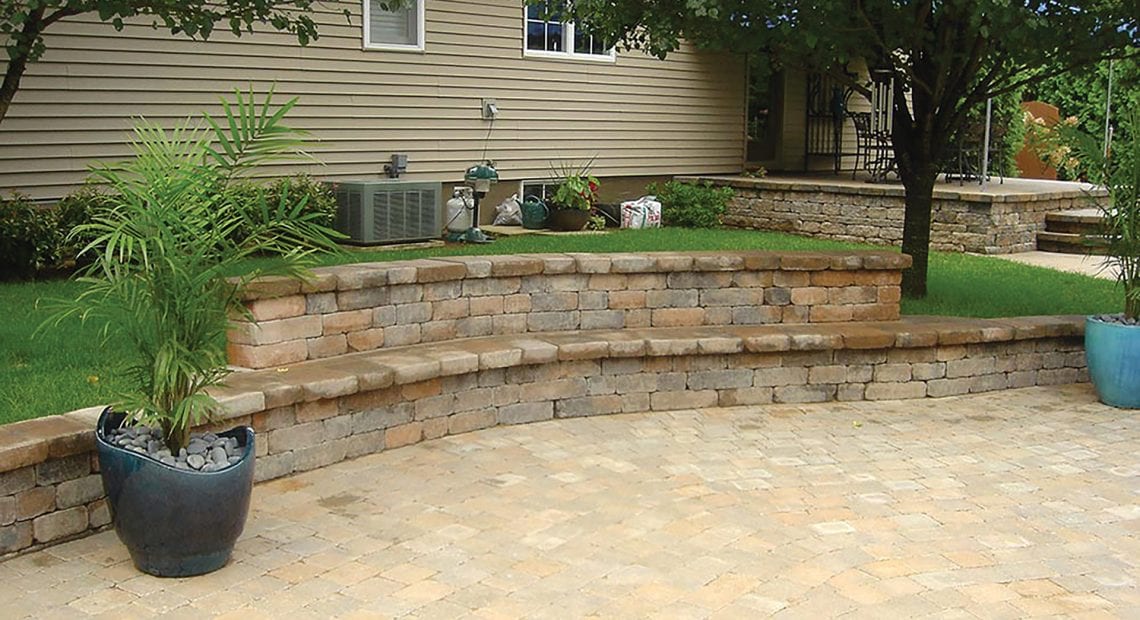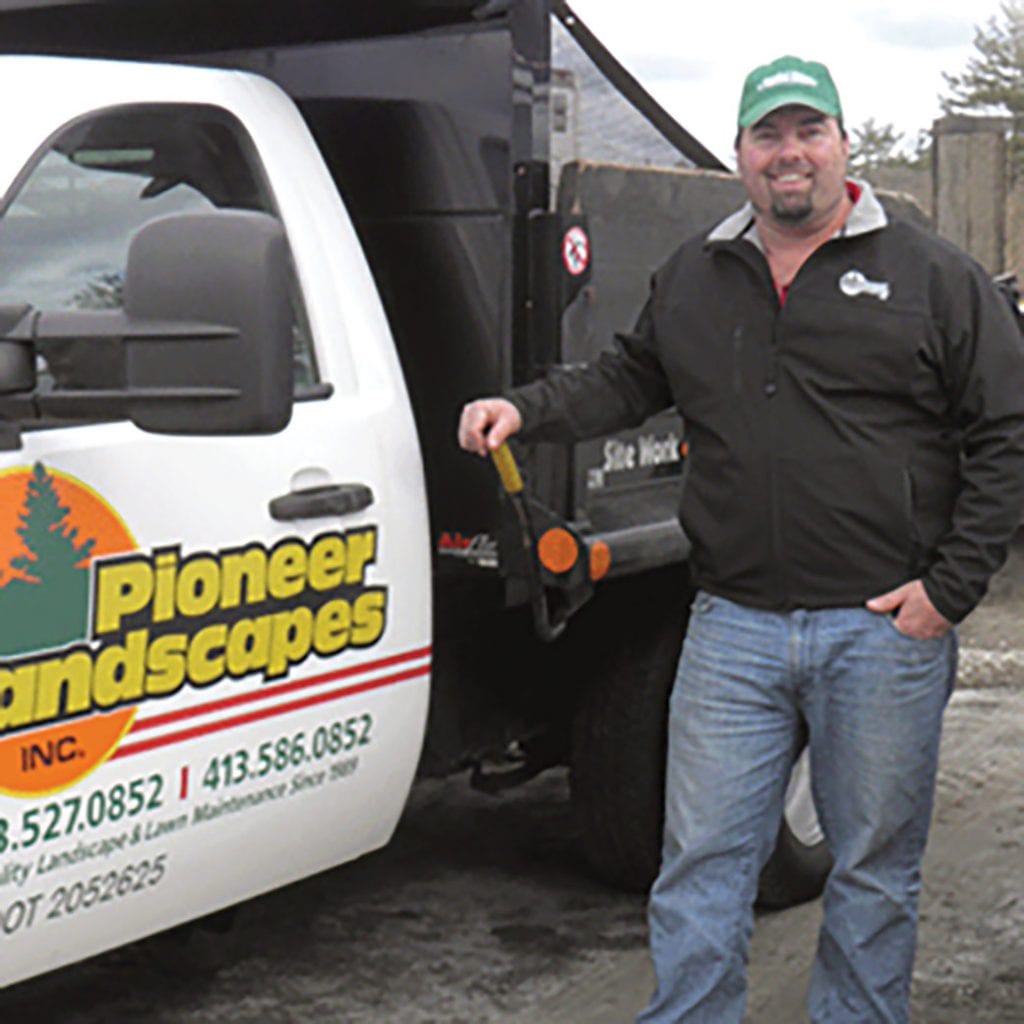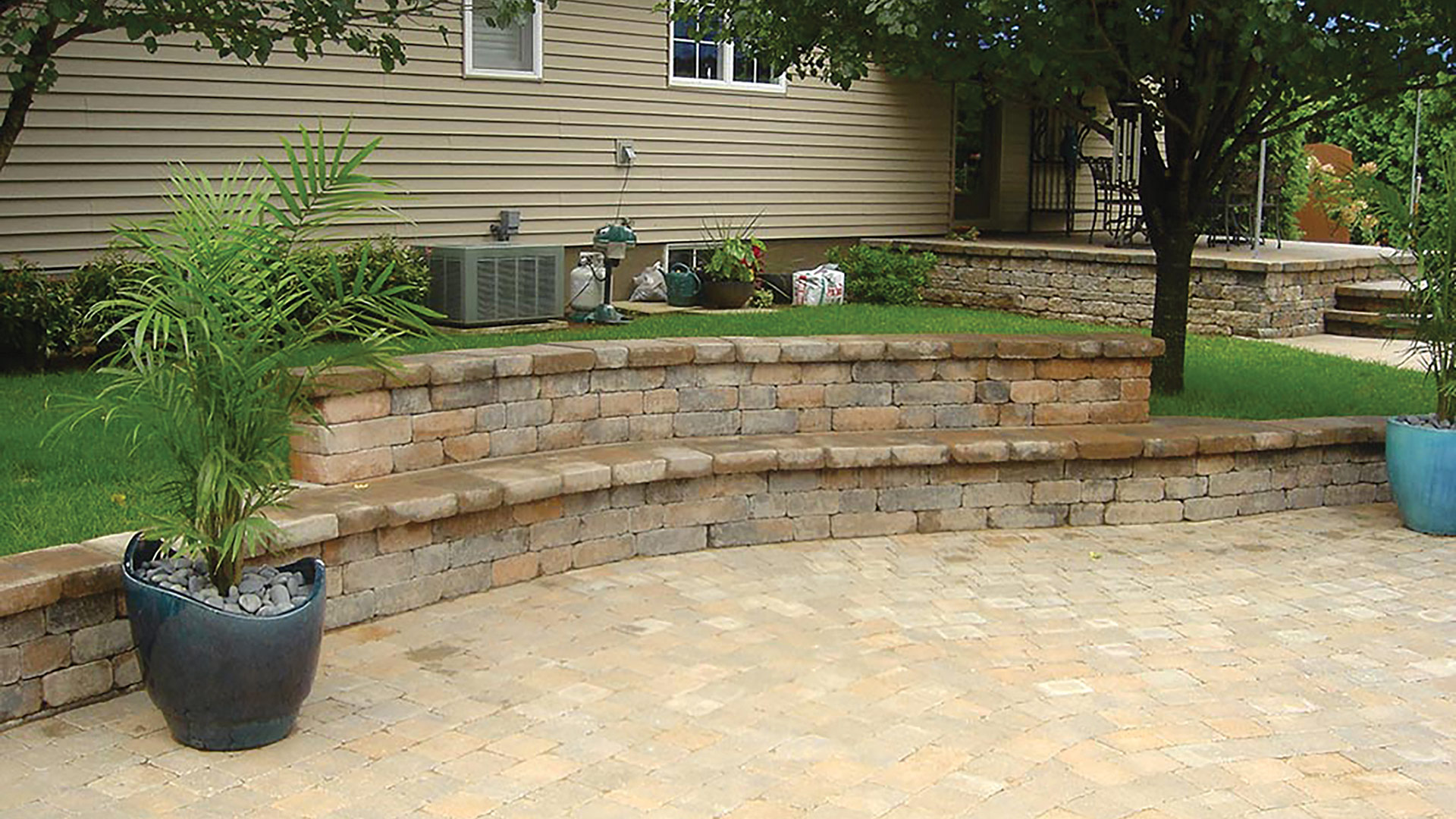Yard Markers
By Mark Morris

Sean Corrigan says landscapers have to deal with the challenge of longer lead times for delivery of many supplies.
Mark Lacombe likes good head start.
And like others in the landscaping industry, he’s grateful for one of the mildest winters in many years — from one perspective, at least.
“A mild winter helps us because there’s no frost in the ground, which allows us to start working on sites now rather than waiting for the frost to thaw and the mud season that would typically follow the thaw,” said Lacombe, general manager of Commercial Grounds Maintenance for Mountain View Landscapes in Chicopee.
However, the downside of a mild winter affects snowplowing, the other business many landscapers run in winter months. Lacombe said a normal winter allows the company to start the year off with revenue, even though he can’t count on it every year.
“During a normal winter, we’ll do about a million dollars in snow removal,” he said. “This winter was only about 65% to 70% of our normal business. That’s where a mild winter really hurts.”
Still, area landscapers say they are staying busy as spring takes hold in New England, and 2023 holds promise as well as some continuing challenges.
Brian Campedelli, owner of Pioneer Landscapes in Easthampton, said his crews are already busy finishing several jobs that carried over from last year due to the unprecedented growth his company experienced in 2022. This year is off to a strong start, too.
“During a normal winter, we’ll do about a million dollars in snow removal. This winter was only about 65% to 70% of our normal business. That’s where a mild winter really hurts.”
“We had a good turnout at the home show,” Campedelli said of last month’s annual event put on by the Home Builders & Remodelers Assoc. of Western Mass. “Many people we spoke with are interested in new projects.”
Greg Omasta also begins the year with several carryover projects. The owner of Omasta Landscaping in Hadley believes he will have a busy year, but he’s also concerned that increases in basic necessities like food and fuel may cause some homeowners to delay their yard improvements.
“We’re still getting calls every day, so I guess I’m optimistic and pessimistic all at the same time,” Omasta said.

Greg Omasta (right, with son Chris Omasta) says inflation in basic necessities may cause some families to delay yard improvements this year.
At the height of the pandemic, the residential side of landscaping exploded as homeowners who would have normally scheduled out-of-town vacations had to stay put. Many decided to convert their yards to outdoor entertainment areas. From elaborate projects like swimming pools and outdoor kitchens to simple landscape upgrades and firepits, every contractor had more business than they could handle.
However, while COVID-19 boosted the staycation phenomenon, it also created unusually high demand for all the products used in hardscaping and landscaping at a time when supply chains around the world faced sporadic delays due to the pandemic.
Landscapers now report that many of the supply-chain issues have subsided, but there are still delays for some products, and everything costs more.
“As we order for this season, plant prices are up, and the freight charges to ship them to us are really high,” Lacombe said, noting that this is a particular challenge when bidding for commercial landscaping projects that won’t start for 12 to 18 months. “We have to estimate the costs for a job that will happen a year from now, while our material prices are only guaranteed for 30 days.”
“Since COVID, municipalities are paying more attention to outdoor spaces and upgrading them, particularly with more climbing structures.”
Omasta pointed to one pleasant surprise, as grass-seed prices have seen a slight decrease. “Also, fertilizer prices have stabilized. I don’t expect them to come down, but at least they are more stable than they’ve been.”
Places to Play
Public parks and playgrounds are an area of commercial business both Omasta and Mountain View have seen as growth opportunities.
Sean Corrigan, vice president of Landscape Construction for Mountain View, said his company has a full schedule of reconstruction work on parks, playgrounds, and athletic fields, with most of the work happening in Connecticut and the Boston area.
“Since COVID, municipalities are paying more attention to outdoor spaces and upgrading them, particularly with more climbing structures,” he said. “They are interesting structures, and many have unique designs. The kids love them.”
Playground equipment and drainage piping are among the products that still have long lead times for delivery, Corrigan noted. “It’s getting better, but we still have to factor in extra time for these items.”
Finding enough workers is another challenge that still exists, but the situation has started to improve. Campedelli said this year has been easier to hire laborers as better-quality applicants are looking for work.
“Some of the more specialized jobs, like hardscape installers, are still hard to fill,” he said. “We recently hired a new general manager and a new office manager, who are both fantastic.”

Dave Graziano says the industry is being challenged to cultivate the next generation of workers.
While Omasta hires extra workers for spring and fall cleanups, he depends on a core group of employees who have worked with the company for years. “We provide them with benefits, holiday and vacation pay, as well as other perks to keep them with us.”
Lacombe said more people are looking for work this year than in the past, but finding workers with experience remains difficult.
“We’re hiring on attitude more than anything else,” he said. “I can teach someone what they need to know, but they need to be willing to come to work every day and put in the effort.”
Dave Graziano, project manager in the Landscape division of Graziano Gardens in East Longmeadow, sees a larger industry problem finding the next generation of landscape workers who want to put in the effort to be successful.
“Anything you can do outside to enhance the entertaining possibilities in your yard is generally what remains popular with people.”
“It’s not for everyone, but it can be rewarding work,” he said. “You see the fruits of your labor from the design of a project through completion, and you make the customer happy. It’s very satisfying.”
Graziano proudly noted that he and his brothers, Mark and Chris, work closely with all their customers. “One of the reasons people call us is because they know they will get a Graziano, and our customers like that.”
Along with landscaping services, Graziano Gardens also runs a retail location, he added. “In addition to people who hire us for landscaping projects, our clients are also do-it-yourselfers who are looking for good ideas and advice.”
As the world continues to move past COVID and more people leave home for vacation, landscapers say there are still plenty of homeowners who want to improve their yards.
“It seems that people are traveling by car more than plane, yet they are still spending money on their yards,” Omasta said.
“It’s not for everyone, but it can be rewarding work. You see the fruits of your labor from the design of a project through completion, and you make the customer happy. It’s very satisfying.”
Campedelli added that he’s hearing from plenty of homeowners who still want stone patios, new lawns, firepits, and other projects. “Anything you can do outside to enhance the entertaining possibilities in your yard is generally what remains popular with people.”
Long-term Value
In addition to the entertainment factor, Omasta noted one compelling reason to invest in a landscape project is the value it can add to a home when it goes up for sale.
According to Better Home and Gardens, attractive landscape projects can add 5% to 12% to a home’s resale value, while a professional hardscape project can add 15% to 20% to the resale value.
For many consumers, thoughts about landscape improvements don’t occur until the weather reaches 70 degrees and stays there. Campedelli’s advice for homeowners planning large backyard projects? Book soon if you want to get your job done this year.
“For special projects, we are scheduled into June and maybe a little later,” he said. “We can bring on new yard-maintenance clients without waiting, but big projects are booking further out.”
While traveling for vacations is on the rise, many people are still staying close to home and investing in their backyards. During the winter months, Campedelli attended seminars from hardscape block manufacturers who said they are in full production this year with lots of new product selections.
“They said the availability is much better this year, and we’ll have no problem getting what we need,” he said. “I hope they are right.”













